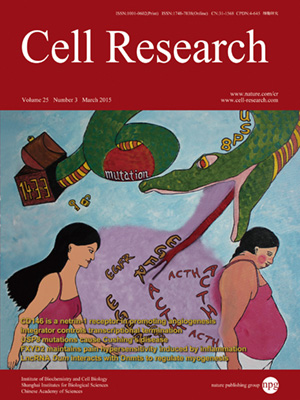
Volume 25, No 3, Mar 2015
ISSN: 1001-0602
EISSN: 1748-7838 2018
impact factor 17.848*
(Clarivate Analytics, 2019)
Volume 25 Issue 3, March 2015: 390-393 | Open Access
LETTERS TO THE EDITOR
Characterization and target identification of a DNA aptamer that labels pluripotent stem cells
Zhonggang Hou1,*, Susanne Meyer3,*, Nicholas E Propson1,4, Jeff Nie1,5, Peng Jiang1, Ron Stewart1 and James A Thomson1,2,3
1Morgridge Institute for Research, Madison, WI, USA
2Department of Cell and Regenerative Biology, University of Wisconsin-Madison, Madison, WI, USA
3Department of Molecular, Cellular, and Developmental Biology, University of California Santa Barbara, Santa Barbara, CA, USA
4Current address: Department of Molecular and Cellular Biology, Baylor College of Medicine, Houston, TX, USA
5Current address: Division of Biomedical Statistics and Informatics, Department of Health Sciences Research, Mayo Clinic College of Medicine, Rochester, MN, USA
Correspondence: James A Thomson,(JThomson@morgridge.org)
Aptamers are short stretches of nucleotides or amino-acid residues that are engineered to bind to various targets, from small chemicals to large proteins and live cells1,2,3,4,5. Aptamers are normally selected through a process called systematic evolution of ligands by exponential enrichment (SELEX), in which aptamers are selected from a random library of oligonucleotides or peptides against a target through repeated rounds of selection and amplification2. As a versatile affinity reagent, aptamers can be used to modulate the behavior of cells6,7, to detect chemical substances in solution8,9, as alternatives to antibodies5,10 and as therapeutic reagents for human diseases11. As aptamers are chemically synthesized in vitro, they offer a great advantage in selection, production, transportation and storage over traditional antibodies. Also, they can come with many types of chemical modifications, which is useful in cell biology. Although many aptamers have been selected against different tissues and cell types, including mouse embryonic stem cells (mESCs)12,
10.1038/cr.2015.7
FULL TEXT | PDF
Browse 2317


